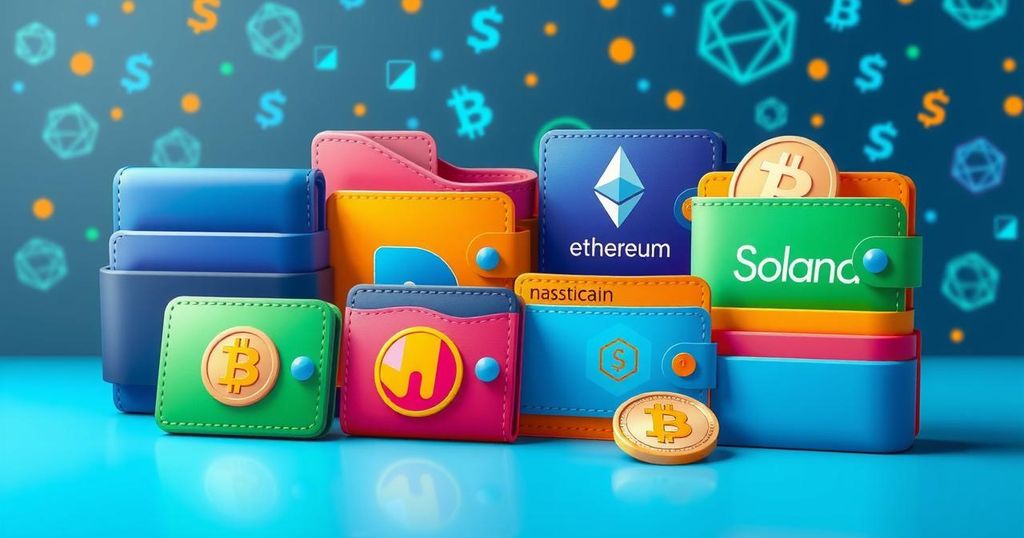Understanding Barriers to Crypto Payments: Insights from the 2025 State of Onchain UX Report
The 2025 State of Onchain UX report examines barriers to crypto payments despite advances in stablecoins and fintech. It reveals insights into user behaviour, with multi-wallet use becoming standard and a shift towards specialised blockchains. Users express more confidence in security, but phishing remains a concern. Key challenges persist, including high fees and low user experience, which hinder broader adoption in mainstream transactions.
Fast Summary
The 2025 State of Onchain UX report sheds light on the sluggish adoption of crypto payments despite the rise of stablecoins and fintech companies. Analyse shows the user experience, behaviour, and preferences that affect mainstream use. Key findings include the prevalence of multi-wallet usage, the shift towards specialized blockchains, and a growing confidence in security but with an uptick in phishing incidents. Overall, while some progress is evident, significant hurdles remain in making crypto payments a seamless alternative to traditional transactions.
Article Body
Crypto payments are still not claiming their place in mainstream finance. Despite the urge from fintech powerhouses and the advent of stablecoins, many users continue to treat crypto transactions as secondary. The newly released 2025 State of Onchain UX report, backed by Reown and Nansen AI, comprehensively studies how users interact with crypto wallets and services.
Conducted over a week in late February, the survey sampled 1,038 active crypto users from the U.S. and U.K. A majority of the respondents were men, aged mostly between 18 and 34, displaying a mix of experience levels. Interestingly, about 43% reported having over two years in crypto, while only 17% were newcomers. Types of crypto usage varied, with the largest groups being traders and DeFi users.
The report highlights that wallets are the primary gateways for users into the crypto world. In fact, wallet adoption appears to be surging, especially in Europe and Asia, although America lags due to regulatory uncertainty. Multi-wallet usage has shot up, with 62% now using two or more wallets mainly for security motives and access to different networks.
Mobile wallets maintain their popularity as the primary access point for most users, though interest has dropped slightly. There’s a growing acknowledgement of hardware wallets among security-conscious individuals. Social wallets are making waves, but they still struggle to maintain user trust or offer seamless interaction with other platforms. Generally, user needs pivot around transaction fees and better security measures, especially as fears of phishing loom large.
Interestingly, the landscape of blockchain usage has shifted. Once, most blockchains tried to encompass all features; now they seem to have adopted a more specialized approach. Ethereum remains the go-to for settlements, drawing enormous transaction volumes. In contrast, Solana is trending for rapid trading activities.
Moreover, new networks like Base are attracting attention with innovative cross-chain capabilities, although only a small fraction of respondents actively use them. Users are becoming choosy with chains, leaning towards those that fit specific needs, revealing an emerging tolerance for versatility among different wallets and chains.
Despite an expanding array of functionalities, most users’ on-chain activities remain narrow, with trading dominating. Bitcoin tops the charts as the most held asset, while interest in stablecoins has shot up significantly. However, when asked about their favourite activities in this space, payments were a distant last at 12%. It looks like speculation still reigns supreme in users’ hearts.
Meanwhile, more users feel secure but, paradoxically, report increased phishing incidents. Around 21% experienced these attacks, up from 14.4%. This hints at evolving threats even as confidence grows. Yet many still consent to transactions without fully grasping the risks involved, which goes hand in hand with the limited adoption of security innovations like Clear Signing interfaces.
Despite the ongoing buzz around crypto payments, actual user behaviour is still a mixed bag. For instance, while 54% acknowledged using crypto for purchases, very few – just 12% – mention payments as their favourite activity. Despite the obvious benefits of stablecoins and corporate initiatives to ease crypto payment adoption, barriers such as high fees and poor user experience still frustrate users.
And importantly, geographical regions play a big role. In areas with shaky currencies, crypto offers a more stable alternative. Meanwhile, in the U.S. and U.K., traditional payment systems often outperform crypto transactions in speed and cost. This leaves crypto functioning more as a secondary option rather than a first choice for transactions.
In summary, while there are positive signs towards embracing crypto, making these payments seamless is still a mountain to climb. The journey towards ensuring crypto can rival traditional finance isn’t just about introducing new tech; it’s also about making it effortlessly integrated into daily lives.




Post Comment